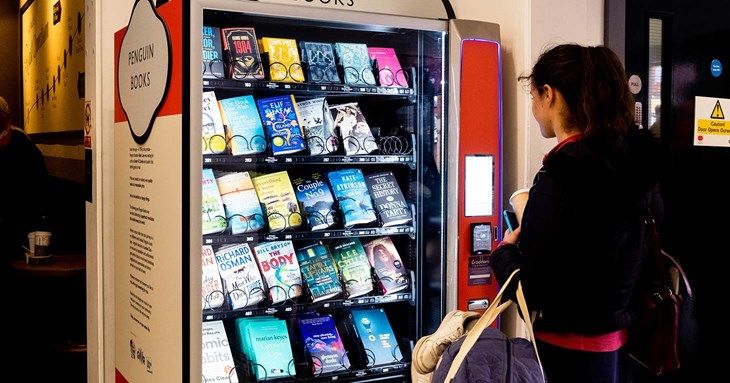Paperback's birthplace
A book vending machine at the birthplace of the modern paperback

Something that I've found endlessly fascinating is the form of a book (I highly recommend checking out John B. Thompson's Merchants of Culture: The Publishing Business in the Twenty-First Century, which is a good overview of the modern day publishing industry. He also just published Book Wars: The Digital Revolution in Publishing, which have been meaning to dip into) because of its simplicity: it's something that's endured in the digital era we live in. The form of the paperback is an interesting one in and of itself; how often have you thought about how this came about?
The paperback is a fairly modern innovation, with the most current form coming from an English published named Sir Allen Lane in 1934. As the oft-told story goes: while waiting at Exeter's train station in 1934, Lane was returning home, and while waiting, was looking for something to read outside of magazines and poorly-reprinted novels. He wasn't able to find anything, and began thinking about how the public would benefit from a line of high-quality paperbacks that would be affordable to the masses. He went on to found Penguin, now a major publisher known for its uniform-style paperbacks. Shortly thereafter, he also made another advance in the world of bookselling: the Penguincubator, a vending machine for books, one that he hoped would be a widely-adopted outlet for selling his products.